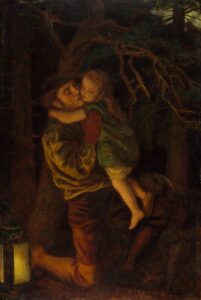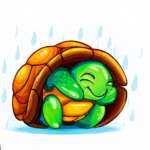
Social Phobia and Anxiety Inventory for Children (SPAI-C)
Below is a sample of a questionnaire used to evaluate the degree of social anxiety in children. The original SPAI-C consists of 26 questions that focus on social phobia and social anxiety. The following, however, is a shorter version that focuses solely on social anxiety.
Instructions:
Please indicate how nervous or scared you feel in the various situations listed below. Use the following scale for your answers:
1 = Never or Hardly Ever
2 = Sometimes
3 = Most of the Time or Always
Test
1-Scared when joining a large group
2-Scared when becoming the center of attention
3-Scared when I have to do something while others watch me
4-Scared when speaking or reading in front of a group
5-Scared when answering questions in class or at group meetings
6-Scared when speaking in front of class
7-Scared when in a school play, choir, music, or dance recital
Scoring
Scores above 18 indicate high levels of social anxiety.
NOTE: PLEASE KEEP IN MIND THAT THIS IS FOR INFORMATIONAL PURPOSES ONLY, IT IS NOT DESIGNED TO PROVIDE A DIAGNOSIS.
Reference:
Beidel CD, Turner SM & Fink CM (1996). Assessment of childhood social phobia: construct, convergent, and discriminative validity of Social Phobia and Anxiety Inventory for Children (SPAI-C). Psychology Assessment, 8: 235-240
DEEP BREATHING EXERCISES FOR CHILDREN

Tummy breathing. With the help of a stuffed animal placed on the child’s belly, she breathes in and out slowly as she imagines rocking the animal to sleep as it rises and falls.

Elephant breathing. The child breathes in slowly through the nose, bringing arms up and over the head, and then exhales slowly through the mouth, bringing the arms down again.

Bubble breathing. Breathing through a bubble wand, the child breathes in slowly and then breathes out to blow bubbles

Shoulder roll breathing. Sitting comfortably, the child takes a slow breath through the nose, raising their shoulders as they do, and lower the shoulders as they exhale through the mouth, repeating the actions with several slow breaths.

Bumblebee breathing. Putting the tips of their pointer fingers in their ears and closing their eyes as they sit comfortably, she breathes in slowly through the nose and hums quietly as she breathes out
Meditation/Yoga
- Third Eye Yoga Diamond. Lying down with a small stone or crystal (or any small item) on her forehead, instruct the child to focus on the item, imagining its colors, its weight, whether it feels warm or cold, and other characteristics. The stone is magical, filled with calmness and relaxation that seeps into their bodies slowly as they breathe deeply.
- Sleeping Elves and Fairies. Playing quiet music, the child is resting in Child’s Pose as the parent taps them gently on the back to deliver the fairy dust that helps them stay perfectly still. The goal is to see how long the child can lie still.
MUSCLE RELAXATION FOR CHILDREN
LEMON
This relaxation exercise releases muscle tension. It can be done with an imaginary lemon/orange or with a real one in each hand. the child squeezes the lemons hard to get all the juice out – squeeze, squeeze, squeeze. She throw the lemons on the floor and relax her hands. Then she repeats, until she has enough juice for a glass of lemonade! After her last squeeze and throw, she can shake out her hands to relax!
LAZY CAT:
She pretends she is a lazy cat. She has just woken up from a nap, and now she wants to stretch. She takes a big yawn, then like a cat, stretches her arms and legs
TURTLE:
She pretends she is a turtle. She is going out for a walk, but oh no! it starting to rain. She quickly curls up in a bowl, hugging herself to protect from the rain. Now, the sun is out again, so she stands up again and stretches her arms out. She repeats several times.
MINDFULNESS
- The “54321” technique: Name 5 objects she can see right now, 4 objects she can feel or touch right now, 3 things she can hear right now, 2 things she can smell right now, and 1 thing she can taste right now.
- Nature walk: Ask the child What she hears and what she sees that’s growing. Encourage her to touch the rough bark of a tree trunk, rub a pine needle, or collect acorns or leaves. How does it feel? How does it smell. Whenever possible, return to the same walk and observe with the child the small and big changes – what new sounds can you hear; what new green things are growing?
Sources:
https://online.regiscollege.edu/online-masters-degrees/master-science-applied-behavior-analysis/relaxation-techniques-for-kids/
https://www.savethechildren.org/us/charity-stories/easy-at-home-relaxation-activities-to-help-calm-kids
REDUCING FEAR OF DARKNESS IN CHILDREN
THREE SOURCES OF NIGHT FEARS IN CHILDREN
- SENSE OF SECURITY: Children actually fear death, separation, and abuse. They will have the following thoughts: “Someone will kidnap me!”; “I will die!”; “There is a stranger in the room!”; or “Are the parents still at home?”
- IMAGINARY CREATURES: Children actually fear imaginary creatures and believe that monsters, ghosts, space creatures, or dangerous animals are hiding in their room.
- INHERENT CHARACTERISTICS OF DARKNESS: Children actually fear shadows or unknown sounds that are typical of darkness.
.
FUN STRATEGIES TO REDUCE CHILDREN’S FEAR OF NIGHTIME
WONDERS OF THE NIGHT
- counting stars/naming stars
- identifying animal by their sounds
- introducing the child to nocturnal animals
- expanding the child’s perspective with astronomy
- making a wish on a shooting star
NIGHT GAMES:
- camping
- making hand shadows
- test of courage: for example asking the child to go pick up a toy in a dark room. Don’t forget to reward the child every step of the way!
- hiking in a dark forest
- chasing the moon
NIGHT ROUTINE:
- leaving dim light sources in the room: for example, light on in the hallway, small night lights, phosphorescent toy figures, etc…
- making sure there is total silence in the room, no white noise
- always give the child a cuddle before going to bed
- make fun of creatures that the child might be afraid of by attributing funny characteristics to them. For example a smelly monster, or a naked ghost.
- practicing relaxation exercises before bedtime.
- sharing a secret mantra imbued with magical power
sources:
Csonka, Sándor. (2021). Why be afraid of the night? – Pedagogical methods for developing positive attitudes towards natural darkness in order to reduce light pollution. Journal of Applied Technical and Educational Sciences; Budapest Vol. 11, Iss. 2, (2021): 18-35. DOI:10.24368/jates.v11I2.222


